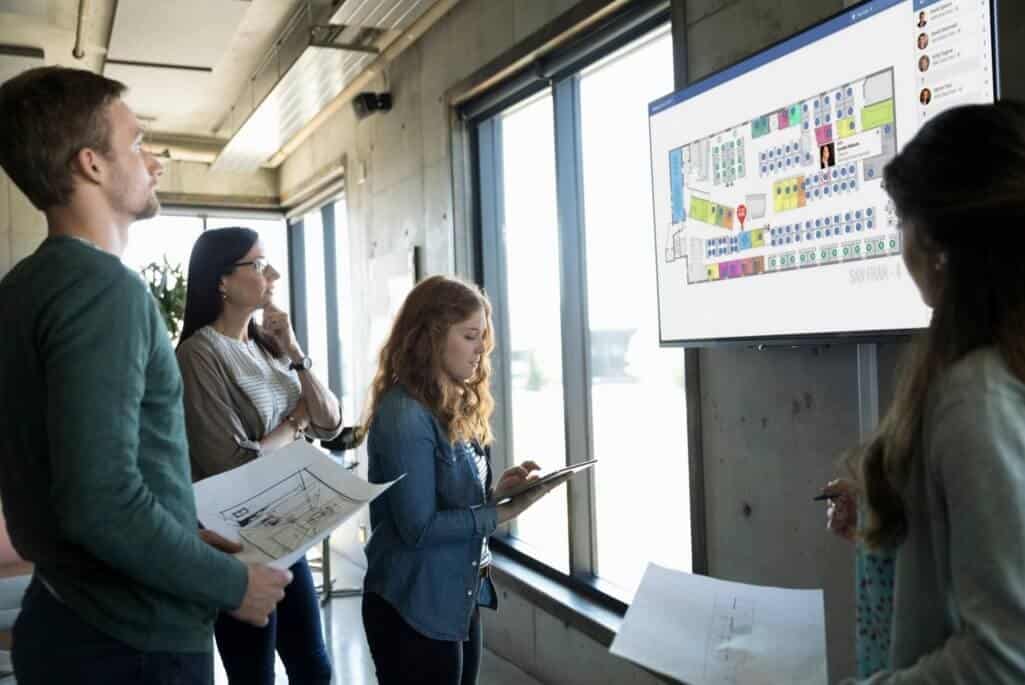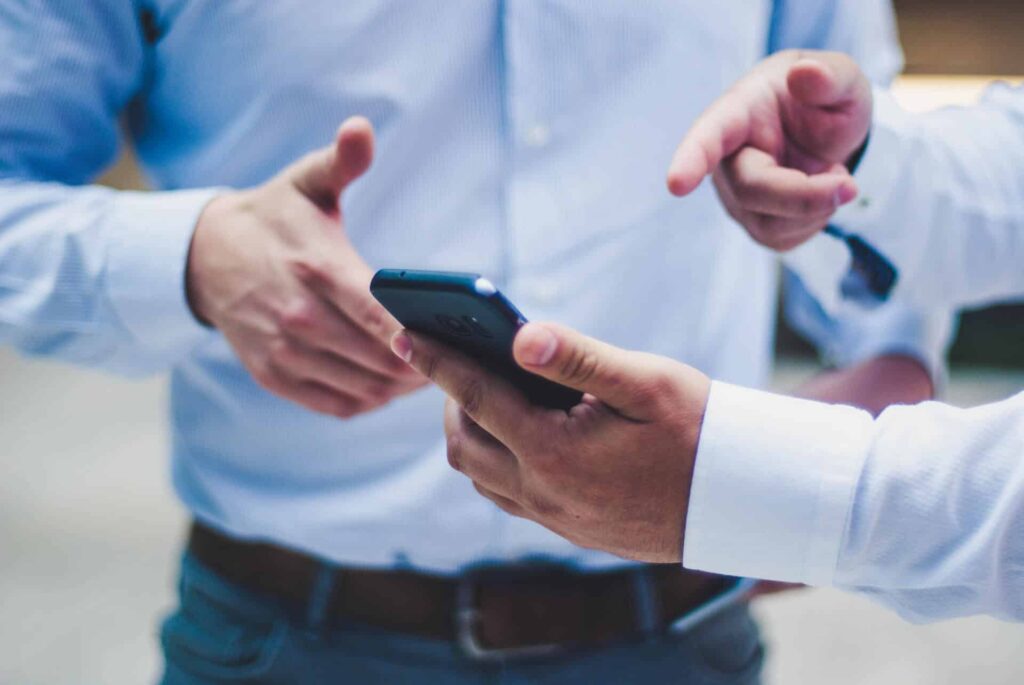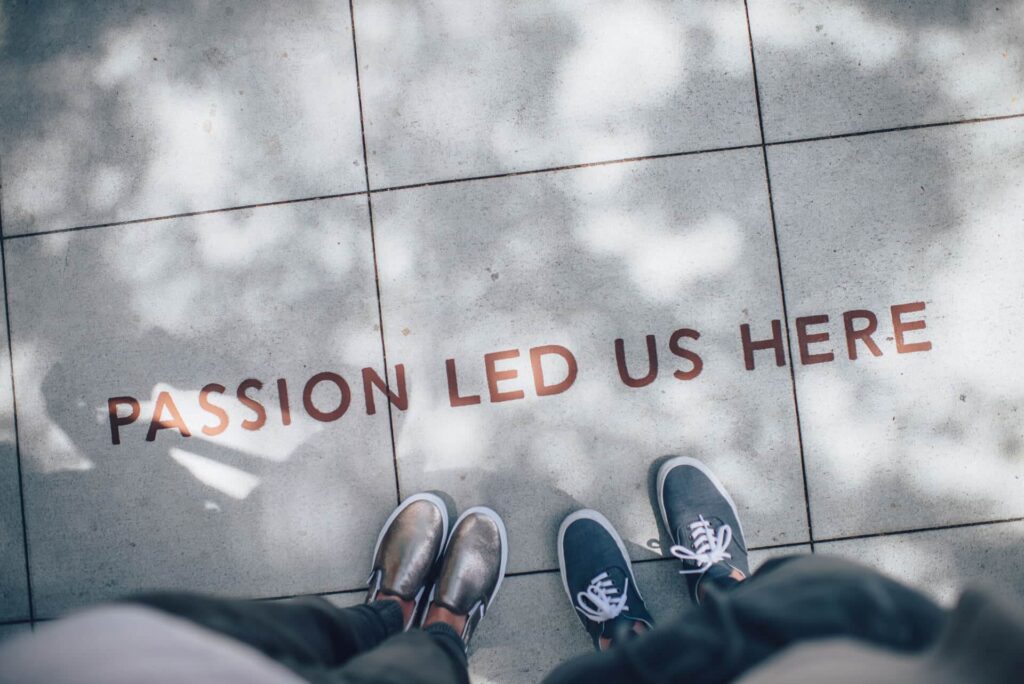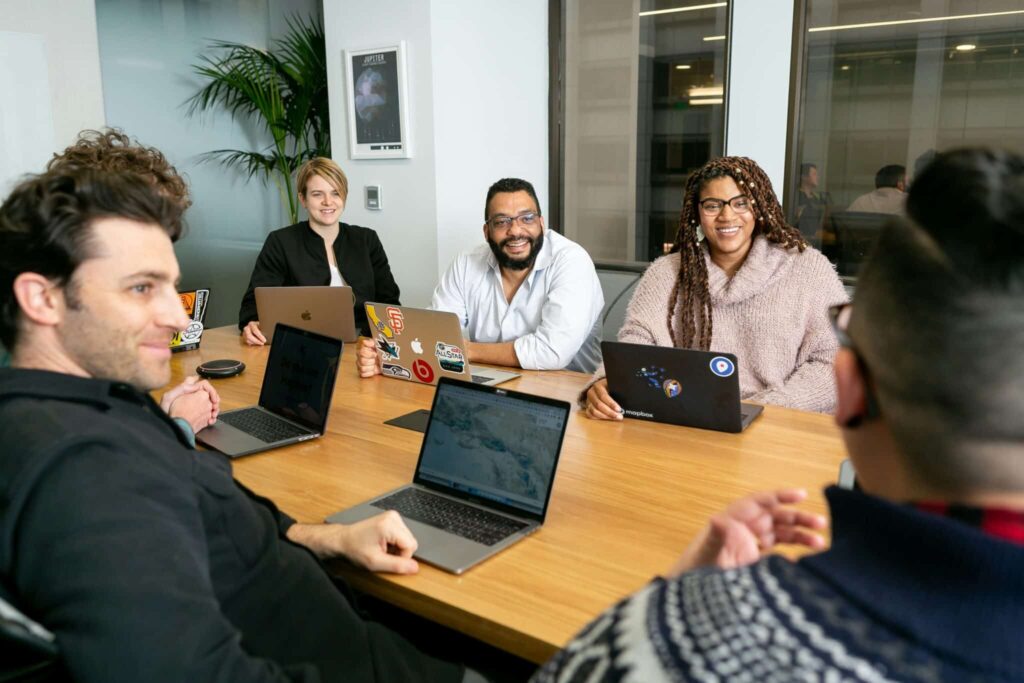What is wayfinding and why is it important?

What is wayfinding? Wayfinding is the set of tools and systems that help people navigate their physical space; quite literally, it’s what helps people ‘find’ their ‘way’ through a built environment.
The term is commonly used to describe the interactive directory software and wayfinding signage systems that larger offices and campuses use to help workers and guests easily get to where they’re going.
But as work becomes increasingly hybrid, even smaller workspaces can benefit from improved wayfinding. This is especially true when wayfinding is part of a complete workplace management system designed to improve user experience and productivity in the office.
In this article, we further explore what wayfinding is. We also review its benefits and how to implement it in any office or workspace.
What is wayfinding?
Wayfinding encompasses all the systems, both big and small, along with all the types of informational signs and directional signs that help guide people through a physical space. It can be as simple as a static facility map that helps people locate their desired destination.
That said, most companies are finding that more complex systems that include interactive floorplans, wayfinding kiosks, IoT sensors, digital signage, mobile apps, and/or wayfinding software, can lead to more productive offices and happier workers.
In the workplace, facility managers (FMs) are tasked with giving employees (and often visitors) all the necessary tools to find and access what they need, when they need it.
For this reason, wayfinding is at the heart of modern facility management, with FMs working to continually improve it.
FMs can also use data collected from a wayfinding information system to make more informed decisions about how the office is used. Data can also be used to improve move management and both room bookings and desk bookings.
As such, wayfinding is not only about navigating a physical space, but also about making it better.

Why is wayfinding important in a hybrid office?
Thanks to the pandemic, more and more organizations are seeing the benefits of embracing hybrid work.
Of course, along with many benefits, hybrid work also presents many challenges.
In particular, visibility in a flexible workplace can be difficult. Workers need to know who is using the office when, in order to know how best to plan for collaborative work and meetings. It’s more important than ever for employees to have a full picture of where everyone is—even if they’re at home—along with which spaces are bookable. They can’t rely on “mental maps” alone. And they need to have this access anywhere, any time. This makes the wayfinding experience critical to how they’re able to do their work.
Ultimately, good wayfinding design will benefit everyone in a hybrid office. This is especially true for those workers who are using the office less. They may be less familiar with the actual office space and any new layouts.

What are the benefits of good wayfinding?
Good wayfinding is so much more than a map taped on the wall.
Assuming FMs have implemented a complete wayfinding system, it can help workers and visitors find and use places, rooms, and other resources. It can also make it easier to find and collaborate with other people.
Specifically, interactive directory software and modern wayfinding offers the following benefits:
Interactivity
As we’ve covered, wayfinding has moved beyond simple directional types of signs. When it’s integrated with an Integrated Workplace Management System (IWMS), it can allow for real-time room and desk booking. This in turn can help better manage a host of flexible work environment types, such as agile working, reverse hoteling, and hot desking.
Access from anywhere
When wayfinding software is available on a mobile app, employees can check maps, see who is in the office, and book a room from anywhere, anytime—even in their pjs.
Better request management
More productivity and better collaboration
When it’s easier to both submit requests and see where they’re coming from, it’s also much easier to manage them.
Wayfinding software gives everyone the information they need to know when and where their coworkers are. It also provides information as to which spaces are available to book. And while this improved visibility is the driving force behind better hybrid working, the reality is that all workers need easier ways to connect with each other—even in traditional offices.
Moreover, by making it easier to submit facility requests, request moves, find and book spaces, and locate resources, employees will be able to spend less time on simple chores and more time focusing on what really matters.
Improved health and safety
Workers who are wandering around the office looking for space are workers who are not safely distanced. Tools like Safeguard and Distancing Planner, which work with existing wayfinding software, can help limit and/or reduce capacity and create a safer workplace. A company can’t just rely on regulatory signs. This is critical, since safety remains a top concern for employees returning to the office.
Improved employee experience
Better wayfinding makes it easier to use the office. And we know that workplace experience has a direct, positive impact on employee well-being. Simply put, good wayfinding means less frustrations and a better physical environment—and therefore happier employees.
Streamlined onboarding
Starting a new job offers many challenges, not the least of which is simply finding your way around. That’s why companies like Harry’s use good wayfinding and signage design to streamline employee onboarding.
“We make sure to talk about OfficeSpace in our onboarding process, and we point out the Visual Directory Kiosks as we’re giving new hires an office tour,” says Celeste Candela, Workplace Experience Manager at Harry’s. “It’s always scary when you’re coming into a new office and you don’t know where to go. New employees constantly give us really positive feedback about having a tool like OfficeSpace in the workplace.”
Better visitor experiences
If your organization routinely welcomes visitors, providing them easy-to-use touchscreens and identification signs at reception and directional signage through your facility will greatly improve their experience and first impressions.
Better decision making
Wayfinding software can tell FMs exactly how people are engaging with the office both daily and over time. Using good wayfinding reports and analytics, they can use this critical data to make more informed decisions about how best to use their corporate real estate going forward.
More sustainability
Not only can better real estate use lead to cost savings, it can also dramatically reduce a company’s carbon footprint, making it useful for those concerned with the triple bottom lines—people, planet and profit. Since the average space utilization rate before the pandemic was only 60%, better wayfinding offers the promise of much better use of space and resources.

How to implement an effective wayfinding system
Wayfinding signs alone are not enough. Wayfinding needs to happen in real time, especially in hybrid workplaces.
Before implementing or working to improve any wayfinding system, FMs should think about their end goal. Namely, an office that is easier for everyone to use and navigate.
People switch desks and cancel meetings on the fly, so your wayfinding system needs to work on the fly, too.
There’s not much point in finding desks and rooms if you can’t actually use them. The ideal wayfinding system will make it easy to book and check into any space.
The ideal system will also be part of a larger request management system. It should co-exist with software your team is already using, like your employee directory, Slack, Google Calendar, or Microsoft Teams.
And wayfinding should work on any device, including through a mobile app.
In other words, to implement wayfinding, FMs should pick robust software. It should be easy to use and it should also make all aspects of using the office easy.
Finally, larger organizations may want to include interactive kiosks at critical junctions as part of their wayfinding system, such as Shopify has done.
“Visual Directory® kiosks are so essential to the way our people navigate their spaces that we constantly get requests to add more,” syas Shopify Workplace Experience Manager, Alicia Murrell. “Our people really rely on the interactive maps inside OfficeSpace to get wherever they need to go.”

What is the purpose of wayfinding?
The purpose of any wayfinding solution is to help people understand their office.
That means it’s not just about getting around the layout. Wayfinding is also about connecting people with the resources they need, in a reliable, repeatable, and accessible way.
OfficeSpace can help you better connect your people to your workspace with innovative wayfinding solutions. Reach out for a free demo.
Photos: Albert Dehon, Luis Villasmil, Ian Schneider, OSS



